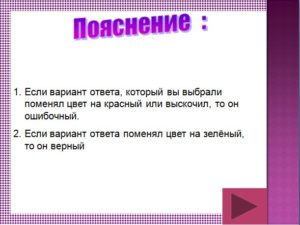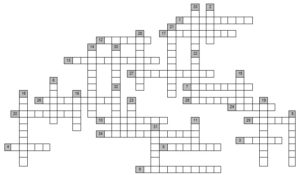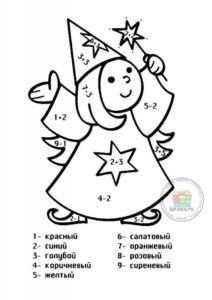Ephremova Lyubov Nikolaevna
Karka Natalia Andreevna
math teacher
MBOW SOSH #9
d. November
The author’s development is presented in the form of a comprehensive work to summarize and systematize knowledge on the topic “Actions with decimal fractions”. Comparison and rounding of fractions.” The tasks are designed for students of the 5th grade. The novelty of this work is meta-subject connections and compliance with the requirements of the GEF. Performing tasks, students show computational skills with decimal fractions, work with text, analysis of the situation.
Main objective of the work:determine the level of formation of meta-subject results in students of 5 classes on the development of the topic “Actions with decimal fractions”. Comparison and rounding of fractions.”
Tasks:establish the level of mastery of key skills (the formation of reading skills, the ability to work with the text, understand and execute instructions), allowing you to successfully advance in the development of educational material at the next stage of training.
Instructions for students
To do this work, you will need to read the text and complete the proposed tasks. While doing the work, you can go back to the text you read, re-read and review it to find answers to questions.
The questions will be different, some of them will require calculations. Calculations and answers will need to be written in a specially designated place under question.
Try to answer all the questions. If you cannot answer a question, move on to the next one. After finishing the work, try to answer the missed questions, then check everything you did.
We wish you success!
Polar bear
The far north of our country is part of the ice zone, within which the Arctic Ocean is located. The total area of the Arctic Ocean is approximately 13 million m2.
One of the representatives of the fauna of the Far North is a polar bear. The polar bear is the largest of the currently living land predators (the maximum length of these animals is 3 m, the maximum weight is 800 - 1000 kg; the average length of the male is 2 m, and the mass is 600 kg; the average length of the female is 1.5 m, its weight is 300 kg). For the existence of a polar bear, three conditions are necessary: ice, open areas of the sea and a coastal strip.
The polar bear is perfectly adapted to the harsh conditions of the Arctic and a semi-aquatic lifestyle. A thick layer of fat and a long coat of dense hair protect the body from cooling, which allows the bear to stay in the water for a long time.Wide paws form a significant paddle surface, so the bear swims well, gaining speed up to 5-6 km / h.
The white color of the coat makes the bear invisible against the background of snow and ice; this makes it easier for him to hunt seals, especially since he covers his black nose with his paws when approaching prey.
Noticing the prey near the hole, the polar bear gently creeps up to it, spreading on the belly, makes a rapid throw and throws prey onto the ice with a sharp stroke of the paw. At one time, he eats 7.2 kg of food.
The ability of polar bears to accumulate a layer of subcutaneous and internal fat and slowly consume its reserves is of great importance for females who in winter live in the den solely at the expense of these reserves.
Since autumn, bears gather on the Franz-Josef Land archipelago and Wrangel Island, where they find suitable places for laying in dens, giving birth and feeding offspring. In November - December, the female is born 2-3 tiny bear cub (800 g each). Before leaving the den, cubs eat fat like cream, mother's milk.
In our country, polar bears were listed in the Red Book, as their number began to decrease. Currently, there is a reserve for polar bears on Wrangel Island, where the number of these animals has almost been restored.
Tasks to be undertaken:
Task 1:Express the weight of a polar adult bear in tons:
Task 2:How much does a polar bear eat in 7 meals?
Task 3:How many feet is the body of an adult bear shorter than that of an adult bear?
Task 4:Determine the weight of a bear family, which consists of an adult bear and a bear and two cubs:
Task 5:Compare the distance that the polar bear will swim in 3 hours at a speed of 5.8 km / h and in 4 hours at a speed of 5.2 km / h:
Task 6:On which island does the polar bear sanctuary operate?
Task 7:Why is the polar bear adapted to live in the Arctic?
Task 8:Which ocean washes the far north of our country?
Task 9:What time of year are the bears born?
Task 10 (additional):
In winter, bears sleep in an earthen den. They prepare for hibernation, accumulate subcutaneous fat and internal fat. If a bear fails to sleep or is awakened, it becomes a dangerous beast. Such bears have a special name. What?
{module Yandex}
For this we need to solve examples:
- 2.45 + 0.312 =
- 18.509 + 3.912 =
- 31.405 + 2.097 =
- 0.6335 + 0.246 + 0.7084 =
- 3.785 + 97.03 + 0.429 + 5.31 =
Round the answer to one, write them down in descending order, replace the answers with letters and you will read the name of the bear.
|
22. |
34 |
3 |
107 |
2 |
|
т |
а |
у |
ш |
н |
Evaluation criteria: (quality of work)
from75% - 100%fine,
from51% to 74%Okay.
50%satisfactorily
50%disappointingly
Literature:
- Mathematics. 5th grade: education for general educational institutions [N.Y. Vilenkin et al.] – 23rd ed., Spr. M.: Mnemozina, 2008. – 280s., Il.
- Gerasimov V.P. Animal world of our Motherland: A manual for a teacher of primary classes. – 2nd ed., Sp. and additional. – M.: Enlightenment, 1985. – 208 p., ISBN 978-5-346-00899-6.
- Nature of Yamal / Coll. authors Yekaterinburg: UIF "Science", 1995. ISBN 5-02-007435-7.
Download lesson summary with illustrations in text format .DOC




